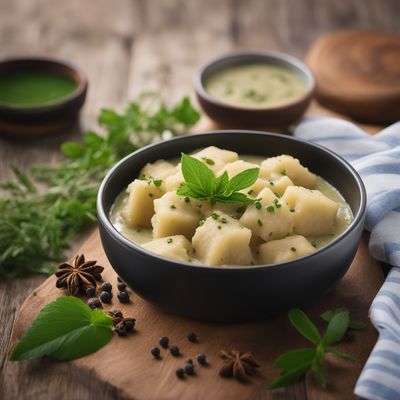
Ingredient
Salal
The Wild Berry: Salal
Salal berries are small, round fruits that range in color from deep purple to black when fully ripe. They have a tart and slightly astringent taste, similar to cranberries or blackberries. The berries are covered in a waxy coating, which gives them a glossy appearance. Salal berries can be eaten fresh or used in various culinary preparations, including jams, pies, sauces, and beverages.
Origins and history
Salal has a long history of traditional use by Indigenous peoples in the Pacific Northwest. The berries were an important food source and were often dried or preserved for winter use. Salal leaves were also used for medicinal purposes, such as treating sore throats and digestive issues. Today, salal berries are still foraged and enjoyed by locals, and their unique flavor and vibrant color have gained recognition in the culinary world.
Nutritional information
Salal berries are a good source of antioxidants, vitamins, and minerals. They are particularly rich in vitamin C and vitamin K. Salal berries also contain dietary fiber, which can support digestive health. However, it is important to note that salal berries should be consumed in moderation due to their tartness and astringency.
Allergens
Salal berries do not contain any known allergens. However, individuals with sensitivities to berries or fruits in general should exercise caution and consume salal berries in small amounts to assess their tolerance.
How to select
When selecting salal berries, look for fruits that are plump, firm, and fully ripe. The berries should have a deep purple to black color and a glossy appearance. Avoid berries that are overly soft or have signs of mold or spoilage. Salal berries can be foraged in the wild or purchased from specialty stores or farmers markets in the Pacific Northwest region.
Storage recommendations
To maintain the freshness of salal berries, store them in the refrigerator. Place the berries in a breathable container or wrap them in a paper towel to absorb excess moisture. Salal berries can be stored for a few days, but they are best enjoyed fresh. If you have an abundance of salal berries, they can also be frozen for longer-term storage.
How to produce
Salal berries grow naturally in the wild and can be foraged by experienced individuals. They thrive in the Pacific Northwest region of North America, particularly in coastal areas. However, cultivating salal berries can be challenging due to their specific environmental requirements. It is best to consult with local experts or horticulturists for guidance on growing salal berries.
Preparation tips
Salal berries can be enjoyed fresh, added to salads, or used in various culinary creations. They make excellent additions to jams, jellies, pies, and sauces. When using salal berries in recipes, consider their tartness and adjust the sweetness accordingly. To enhance their flavor, gently cook the berries with a touch of sugar or honey.
Culinary uses
Salal berries are commonly used in jams, jellies, and pies. They can also be incorporated into sauces for savory dishes or used as a topping for desserts. Additionally, salal berries can be dried and used in trail mixes or added to baked goods for a unique twist.
Availability
Salal berries are primarily available in the Pacific Northwest region, including British Columbia, Washington, and Oregon.
More ingredients from this category » Browse all

Jostaberries
The Tangy Delight: Unveiling the Secrets of Jostaberries

Myrtle berries
The Enchanting Berries of Myrtle

Juneberries
The Sweet Delight of Juneberries

Serviceberries
The Berry of Abundance

Golden currant
The Fragrant Spice of Delight

Lingonberries and similar
The Tart and Tangy Delights: Exploring Lingonberries and Similar Berries

Huckleberries
The Wild Delicacy: Unveiling the Enchanting World of Huckleberries

Bilberries (generic)
The Secret Superfood: Unveiling the Power of Bilberries

Aronia berries
The Mighty Antioxidant Powerhouse

Blueberries
Bursting with Antioxidant Power: The Vibrant World of Blueberries

Haskaps
The Marvelous Haskaps

Sea buckthorns
The Tangy Treasure of the North
Recipes using Salal » Browse all

Caymanian-style Grilled Steak with Plantain Mash
Tropical Delight: Grilled Steak with Plantain Mash

Makanek Tacos
Lebanese-Inspired Makanek Tacos: A Fusion of Flavors

Silesian-style Chicken Liver Pâté
Hearty Silesian Delight: Chicken Liver Pâté with a Twist

Antiguan and Barbudan Style Potato Dumplings
Caribbean Delight: Antiguan and Barbudan Potato Dumplings

Welsh Spiced Fruit Loaf
A Taste of Wales: Spiced Fruit Loaf Delight

Traditional Cumberland Sausage Recipe
Savory Delight: Authentic Cumberland Sausage

Lebanese Baked Kubbah
Savory Delights: Lebanese Baked Kubbah

Swedish-style Bisi in Tecia
Savory Pea Stew with Swedish Flair

Jamaican Fish Tea
Caribbean Delight: Jamaican Fish Tea

Grenadian Spiced Venison Stew
Caribbean Delight: Grenadian Spiced Venison Stew

Danish-style Red Sausage with Creamy Mustard Sauce
Savory Delight: Creamy Mustard Red Sausage from Denmark

Haitian-Style Mechado
Savory Beef Stew with a Haitian Twist